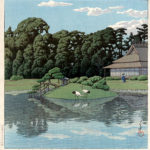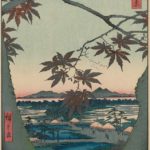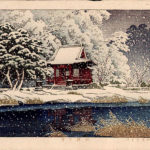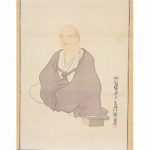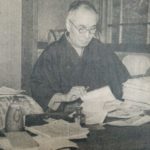Matsuo Basho's Spring haiku poems
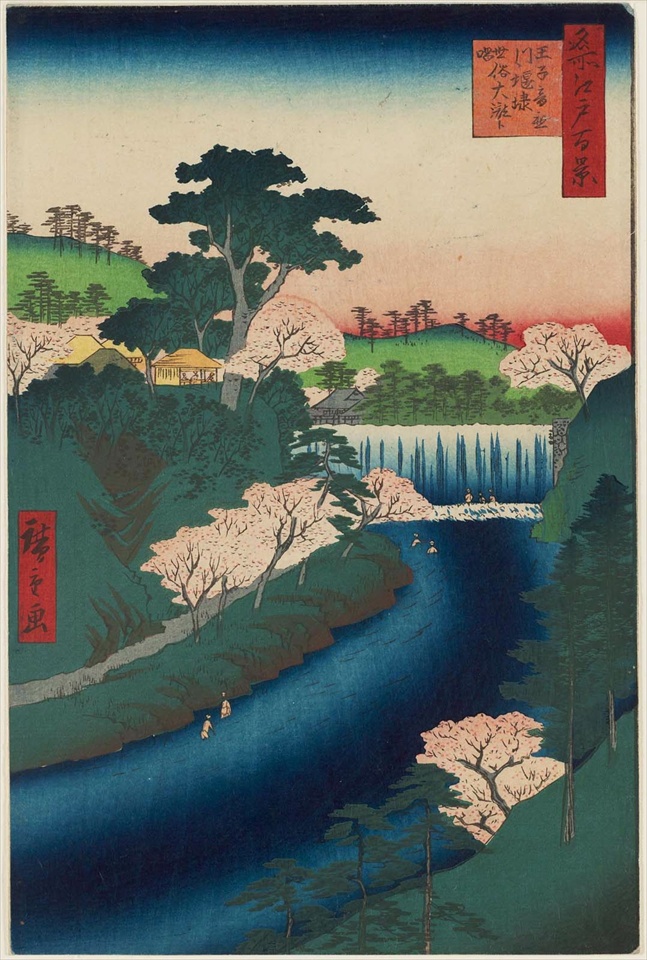
The spring haiku that Matsuo Basho (1644-1694) made has a seasonally free and easy characteristic, but some work are somewhat funny (it probably depended on his personality). As it was the lunar calendar until the Edo period in Japan, spring was between January and March.
Please enjoy the great 5-7-5 poems on comfortable season!
Related Post
Basho's Spring haiku poems
<Japanese>
春たちて まだ九日の 野山哉
Haru tachite/ Mada kokonoka no/ Noyama kana
<English>
Passed the first day of spring,
It’s only nine days
On the hills and fields.
*He did not make it a word, but he surely trembled in the cold air of the mountain in early spring.
<Japanese>
花の雲 鐘は上野か 浅草か
Hana no kumo/ Kane ha Ueno ka Asakusa ka
<English>
A cloudy day during the cherry blossom season.
Whether the sound of bell at Ueno
Or Asakusa.
*Have you ever heard the sound of the temple bell? It is profound and impressive sound.
<Japanese>
春もやや 気色ととのふ 月と梅
Haru moya ya/ Keshiki totonou/ Tsuki to ume
<English>
The spring haze.
The scent already in the air.
The moon and ume.
*From dry winter to a little moist spring.
<Japanese>
初春まづ 酒に梅売る 匂ひかな
Shoshun mazu/ Sake ni ume uru/ Nioi kana
<English>
Firstly, at the beginning of Spring,
They sell Sake and ume blossoms
And I smell them.
*ume: A Japanese apricot(plum)
<Japanese>
鮎の子の 白魚送る 別れ哉
Ayu no ko no/ Shirauo okuru/ Wakare kana
<English>
The children of the ayu
See the icefish off.
This is a parting.
*ayu: A sweetfish. Basho meant it as his pupil. And the icefish represents Basho and Sora who set out for the travel of Oku-no-Hosomichi.
<Japanese>
植うる事 子のごとくせよ 児桜
Uuru koto/Ko no gotoku seyo/ Chigo-zakura
<English>
Try to plant
As for a child.
A little wild cherry tree.
<Japanese>
このほどを 花に礼いふ 別れ哉
Konohodo wo/ Hana ni rei iu/ Wakare kana
<English>
“Thanks for all”
Expressing my gratitude to blossoms
At the parting.
*If you don’t not specify the type of flower in the haiku poems, that means the cherry blossoms.
<Japanese>
元日は 田毎の日こそ 恋しけれ
Ganzitsu ha/ Tagoto no Hi koso/ Koishi kere
<English>
On the New Year’s Day,
It’s the day in Tagoto
That I miss.
*Tagoto: Chikuma, Nagano Prefecture. It is famous for the terraced rice-fields. Basho visited the place the year before he made the haiku poem.
Sponsored Links
<Japanese>
梅が香に 追いもどさるる 寒さかな
Umega ka ni/ Oimodosaruru/ Samusa kana
<English>
The smell of ume blossom
Get pushed back
To cold weather.
<Japanese>
四つ五器の そろはぬ花見 心かな
Yotsu goki no/ Sorowanu hanami/ Gokoro kana
<English>
All the four bowls
Are not perect,
But I enjoy cherry‐blossom.
*The haiku laughed away the poor situations that the dishes are incomplete.
闇の夜や 巣をまどはして 鳴く鵆
Yo no yami ya/ Su wo madowashite/ Naku chidori
<English>
In the dark night,
Losing sight of the nest,
The plover crys.
<Japanese>
麦飯に やつるる恋か 猫の妻
Mugimeshi ni/ Yatsururu koi ka/ Neko no tsuma
<English>
As the boiled barley and rice,
And worn out with the love,
The wife of the cat.
<Japanese>
鶯や 餅に糞する 縁の先
Uguisu ya/ Mochi ni fun suru/ En no saki
<English>
The bush warbler
Drops on a rice cake
On the veranda.
*People dried a New Year’s rice cake not to grow the mold.
<Japanese>
梅白し 昨日ふや靏を 盗まれし
Ume shiroshi/ Kinou ya tsuruwo/ Nusumareshi
<English>
The white ume blossom.
Yesterday, the cranes
Were stolen.
*Where is the cranes? As if the whiteness of the plums were the trace of cranes.
More Basho’s haiku poems
Other famous Japanese poets


